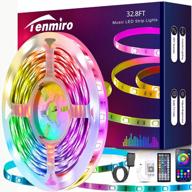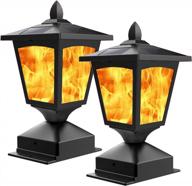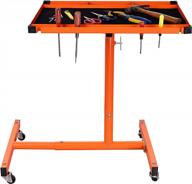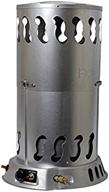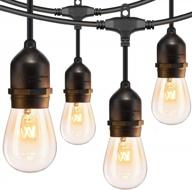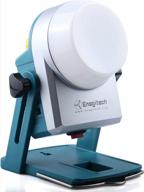Top products in 💡 Job Site Lighting
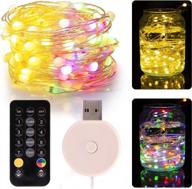

37 Review



42 Review

Choosing the Right Portable Work Lights
Having proper lighting on a job site is crucial for safety and productivity. Portable work lights provide versatile, movable illumination exactly where you need it. When selecting portable work lights, there are several factors to consider:
Light Output
The light output of a portable work light is measured in lumens. A higher lumen rating means brighter light. For most general tasks, look for at least 2000 lumens. High lumen models 4000+ are best for large areas or when you need to overcome sunlight.
Beam Angle
The beam angle indicates the spread of light. Wider beams up to 120° are good for area illumination, while narrow spot beams 30°-60° help focus light on a specific task or object.
Durability
Job site conditions can be tough on lighting. Look for lights made of durable materials like reinforced plastic or rubberized coating to withstand drops. Water and dust resistant models (IP64 rating or higher) can handle wet outdoor environments.
Power Source
Portable work lights run on batteries, AC power, or are rechargeable. Battery-powered gives the most flexibility for remote areas. AC lights plug into generators and outlets for unlimited run time. Rechargeable models offer the convenience of batteries without disposable costs.
Mounting Options
Look for built-in hooks, magnets, or a stand to easily mount or position the light. Models with articulating heads and pivoting hooks make directional lighting adjustments simple.
Additional Features
- Multiple lighting modes like high/low settings or emergency flashing
- Handle or carrying strap for easy transport
- Indicator lights showing battery level or charging status
- Dual power source (AC and battery)
Taking the time to evaluate your lighting needs and choose the right features will provide the best portable work light for the job. Investing in quality, durable lights made for professional use will give you bright, long-lasting illumination.
Similar products
Types of Job Site Lighting Fixtures
Properly lighting a construction site improves productivity and safety. There are various types of lighting fixtures designed for the demands of job sites.
Portable Work Lights
Portable work lights provide flexible, movable illumination. They run on battery or corded power and feature durability like all-weather construction and impact resistance.
- LED work lights - Very bright, energy efficient LED bulbs. Often rechargeable with long battery life.
- Inspection lights - Compact penlights or right-angle lights for illuminating tight spaces.
- Flood/spot combo lights - Adjustable beams from wide flood to focused spotlight in one unit.
Another interesting products
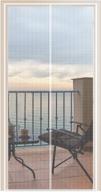

36 Review



39 Review

Temporary String Lights
Temporary string lights quickly provide overhead lighting anywhere needed. They come in LED or incandescent.
- Bare bulb - Simple socket and wire setup, available in different wattages.
- Caged bulb - Protective wire cage around bulbs for durability.
- Shop light - Enclosed metal wire fixture houses fluorescent tubes.
Area and Security Lights
Area and security lighting illuminates large zones and enhances site visibility and safety at night.
| Type | Features |
|---|---|
| Pole/post lights | Mounted on tall, stationary poles. LED or metal halide. |
| Flood lights | Powerful, adjustable flood beams. LED and metal halide options. |
| High bay lights | Very bright light for high ceiling areas. Durable and energy-efficient. |
Hazard and Warning Lights
Hazard and warning lights alert workers to potential dangers and obstacles on the job site.
- Flashing safety lights - Motion-activated LEDs flash to identify walkways, barricades, etc.
- Warning indicator lights - Bright strobe lights warn of hazardous equipment in use.
- Tower lights - High-visibility pulsing or steady red lights mark tall equipment like cranes.
Choosing suitable lighting fixtures improves visibility, safety, and working conditions on construction sites. Consider beam angle, durability, and mounting options to select the right job site lighting.
Safety Considerations for Job Site Lighting
Proper illumination is essential for a safe construction site. When setting up lighting, keep these safety factors in mind:
Avoid Shadows and Dark Areas
Shadows and dark zones create tripping and injury hazards. Use adequate lighting that minimizes shadows. Position area floodlights to overlap and avoid blind spots.
Choose the Right Beam Angle
Wide flood beams work well for general area lighting. Use more focused spotlights and right-angle lights when workers need illumination for specific tasks or tight spaces.
Protect Lights from Damage
Install protective cages or shields around bulbs to prevent breakage. Use mounting options like retractable hangs or adjustable stands to keep lights off the ground.
Consider Glare
Direct glare from intense light sources can temporarily blind workers. Choose fixtures with diffusers, shades or louvers to diffuse glare. Angle lights to avoid shining directly in workers' eyes.
Light Hazardous Areas
- Stairwells
- Excavations
- Material storage areas
- Scaffolding
Use warning lights like flashing LEDs to identify hazards at night.
Illuminate Pathways and Exits
Clearly light walkways, ladders, ramps, and exit routes so workers can safely navigate the site at all times.
Use Durable, Waterproof Lights
Select heavy-duty portable lights rated for wet locations. Fixtures made of rubberized plastic and sealed LEDs withstand dirt, dust and moisture.
Check Lights Regularly
Inspect all lighting for damage and replace bulbs as needed. Check backup battery lights and charging status of rechargeable models.
Following basic safety precautions allows construction lighting to effectively improve visibility rather than contribute hazards on the job site.
How to Set Up Temporary Lighting on a Construction Site
Temporary lighting is essential for productivity and safety on construction sites. Follow these steps to effectively set up lighting:
Assess Lighting Needs
Consider what types of tasks will be performed and inspect site conditions. Identify areas that require illumination like:
- Active work zones
- Equipment and material storage
- Pathways and exits
Choose Suitable Fixtures
Select durable, high-lumen lights designed for construction sites. Fixture types include:
- Portable LED work lights - flexible illumination for tasks
- String lights - overhead lighting strung on poles
- Flood lights - wide area coverage from mounted fixtures
Determine Power Sources
Running lights off generators, connecting to power outlets, or using battery-powered lights are common options. Consider available sources and unit portability.
Position Lights Effectively
Mount or place lights to provide optimal illumination of work zones without shadows or glare. Follow manufacturer guidelines for safe installation.
Safely Route Wiring
Securely fasten wiring at least 8 ft. overhead or bury underground. Cover temporary wiring with mats or decking to prevent tripping hazards.
Use Lighting Controls
Timers, photosensors, and occupancy sensors help automate lights and save energy when not needed.
Inspect Frequently
Check lighting daily to fix issues like outages, damaged cords, or blocked light. Replace blown bulbs promptly.
Proper temporary lighting improves visibility and contributes to an efficient, safer job site.
Top Features of Durable Job Site Light Bulbs
Job site light bulbs need to withstand tough conditions. Look for these key features when selecting durable bulbs:
Shatter Resistance
Bulbs should be impact-resistant or enclosed in cages/guards to prevent hazardous shards if broken. LEDs are very rugged.
Moisture Resistance
Waterproof bulbs with sealed housings prevent moisture damage in wet conditions:
- LED bulbs are naturally water-resistant.
- Look for waterproof ratings like IP65.
- Rubberized coatings add protection.
Thermal Management
Features to handle heat buildup extend LED lifespan:
- Aluminum PCBs dissipate heat.
- External fins and ridges radiate heat.
Surge Protection
Guards against electrical spikes that can burn out bulbs:
- Look for bulbs engineered with surge protection.
- Use fixtures with built-in surge guards.
Heavy-Duty Filaments
Robust filaments in incandescent bulbs resist vibration damage.
Reinforced Bases
Durable plastic or metal materials at the base increase longevity.
Long Lifespan
LED bulbs last up to 50,000 hours, outlasting other types.
Quality lighting designed for demanding work sites will provide lasting illumination even under extreme job site conditions.
Comparing Cordless and Corded Job Site Lighting
Job sites utilize both cordless and corded lighting options. Here's how they compare:
Portability
Cordless lights powered by batteries offer complete portability for remote areas without power access. Corded lights limit placement to within reach of generators or outlets.
Operating Time
Cordless lights run for several hours on a charge depending on brightness. Run time is limited by battery life. Corded lights have unlimited operation when plugged into a power source.
Setup and Use
Cordless lights only require switching on - no cords to connect. Corded lights need extra time to string wiring and make electrical connections.
Weatherproofing
Cordless and corded options both offer durable, waterproof lights for wet job site conditions with appropriate IP ratings.
Light Output
High-lumen LED models provide powerful illumination in both cordless and corded lights. Output is similar when comparing wattage.
Safety
Cordless eliminates tripping hazards from wires. Corded requires overhead or covered wiring runs. Both need sturdy, protected bulbs.
Cost
Cordless is generally more expensive upfront. But corded lights require dedicated wiring/cords. Battery replacements add ongoing costs for cordless.
The choice depends on site layout, power availability, and portability needs. Both cordless and corded lighting have a place on the job site.
Must-Have Accessories for Job Site Lighting
Certain accessories can enhance job site lighting and solve common problems. Here are some must-have add-ons:
Lighting Timers
Programmable timers automatically turn lights on/off on a set schedule. Helpful for:
- Saving energy when lights aren't needed.
- Ensuring site is lit at night or certain times.
Motion Sensors
Motion-activated sensors switch lights on when movement is detected. Useful for:
- Increasing safety in dark areas.
- Conserving power when areas are vacant.
Photocells
Photocells switch lights on at dusk and off at dawn:
- No need to manually turn on/off.
- Ensure proper night visibility.
Tower Warning Lights
High-visibility warning lights for tall equipment:
- Enhance visibility of cranes, excavators, etc.
- Alert workers to hazards with strobing/pulsing red lights.
Hard Hats with Lights
Integrated LEDs give hands-free lighting:
- Convenient for tasks requiring both hands.
- Keep both eyes illuminated when working in dark areas.
Accessorizing job site lights adds functionality, automation, and visibility for a safer, smarter site.
Illuminate Your Job Site With Worksite Lighting
WorkSite Lighting is a world-leading manufacturer of explosion-proof lighting and portable power distribution equipment. They offer a full range of job site lighting and portable power distribution units that can suit virtually any construction environment. WorkSite Lighting manufactures job site lighting to fully illuminate your job site and keep your employees safe, including quartz lights. The Home Depot offers a variety of job site lighting products that you can buy online or pick up in-store. Milwaukee Tool also offers a range of heavy-duty and high-performance job site lights, including flood, temporary, handheld, tower, and personal lighting.
- Choosing the Right Portable Work Lights
- Light Output
- Beam Angle
- Durability
- Power Source
- Mounting Options
- Additional Features
- Types of Job Site Lighting Fixtures
- Portable Work Lights
- Temporary String Lights
- Area and Security Lights
- Hazard and Warning Lights
- Safety Considerations for Job Site Lighting
- Avoid Shadows and Dark Areas
- Choose the Right Beam Angle
- Protect Lights from Damage
- Consider Glare
- Light Hazardous Areas
- Illuminate Pathways and Exits
- Use Durable, Waterproof Lights
- Check Lights Regularly
- How to Set Up Temporary Lighting on a Construction Site
- Assess Lighting Needs
- Choose Suitable Fixtures
- Determine Power Sources
- Position Lights Effectively
- Safely Route Wiring
- Use Lighting Controls
- Inspect Frequently
- Top Features of Durable Job Site Light Bulbs
- Shatter Resistance
- Moisture Resistance
- Thermal Management
- Surge Protection
- Heavy-Duty Filaments
- Reinforced Bases
- Long Lifespan
- Comparing Cordless and Corded Job Site Lighting
- Portability
- Operating Time
- Setup and Use
- Weatherproofing
- Light Output
- Safety
- Cost
- Must-Have Accessories for Job Site Lighting
- Lighting Timers
- Motion Sensors
- Photocells
- Tower Warning Lights
- Hard Hats with Lights
- Illuminate Your Job Site With Worksite Lighting





